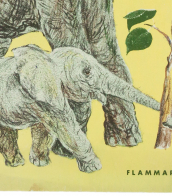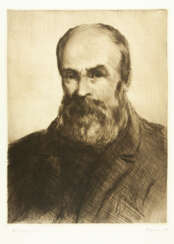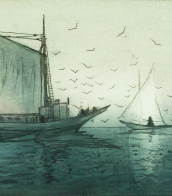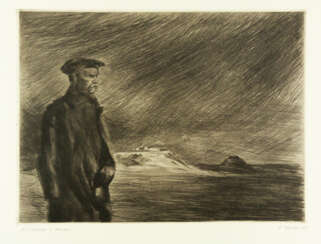танк














Walter Tanck was a German landscape painter, engraver and woodcarver. He studied painting with Franz Nölken in Hamburg.
In 1937, as part of the Nazi "Degenerate Art" campaign, his graphic portfolio "Don Quixote" (15 etchings and a lithograph on the title page) from the Dusseldorf Art Collection and his panel "Nude Woman" were confiscated and destroyed.


Walter Tanck was a German landscape painter, engraver and woodcarver. He studied painting with Franz Nölken in Hamburg.
In 1937, as part of the Nazi "Degenerate Art" campaign, his graphic portfolio "Don Quixote" (15 etchings and a lithograph on the title page) from the Dusseldorf Art Collection and his panel "Nude Woman" were confiscated and destroyed.



Anton Stankowski was a German graphic designer, photographer and painter. He developed an original Theory of Design and pioneered Constructive Graphic Art. Typical Stankowski designs attempt to illustrate processes or behaviours rather than objects. Such experiments resulted in the use of fractal-like structures long before their popularisation by Benoît Mandelbrot in 1975.


Anton Stankowski was a German graphic designer, photographer and painter. He developed an original Theory of Design and pioneered Constructive Graphic Art. Typical Stankowski designs attempt to illustrate processes or behaviours rather than objects. Such experiments resulted in the use of fractal-like structures long before their popularisation by Benoît Mandelbrot in 1975.


Anton Stankowski was a German graphic designer, photographer and painter. He developed an original Theory of Design and pioneered Constructive Graphic Art. Typical Stankowski designs attempt to illustrate processes or behaviours rather than objects. Such experiments resulted in the use of fractal-like structures long before their popularisation by Benoît Mandelbrot in 1975.









































![[Альбом: Типы и униформа Красной Армии, виденные в Берлине в 1945 г.]. Types & uniformes de l’Armee Rouge vus a Berlin en 1945 / Texte et Documentation de G.A. Chrestell.](/assets/image/picture_1784524/77994/bpwbekdelxly8jwrxt2zsiamf6l8ziqxbhxuhcwsmltww0cltqfmehruv0pheg3s1635787994jpg__fix_374_244.jpeg)
![[Альбом: Типы и униформа Красной Армии, виденные в Берлине в 1945 г.]. Types & uniformes de l’Armee Rouge vus a Berlin en 1945 / Texte et Documentation de G.A. Chrestell.](https://veryimportantlot.com/assets/image/picture_1784524/77994/bpwbekdelxly8jwrxt2zsiamf6l8ziqxbhxuhcwsmltww0cltqfmehruv0pheg3s1635787994jpg__fix_374_244.jpeg)
![[С вложением 6 гравюр] Павлов, И.И. Каталог выставки гравюр и рисунков к 75-летию со дня рождения и 60-летию трудовой деятельности / Сост. Р.И. Бендерский.](/assets/image/picture_1793926/b27cd/1yfq-d1g5qlfjj-n6qxxvadonxu4kczwmrzmqb42qhm1gfj3e-xblze6jd939-j1635933867jpg__fix_374_244.jpeg)
![[С вложением 6 гравюр] Павлов, И.И. Каталог выставки гравюр и рисунков к 75-летию со дня рождения и 60-летию трудовой деятельности / Сост. Р.И. Бендерский.](https://veryimportantlot.com/assets/image/picture_1793926/b27cd/1yfq-d1g5qlfjj-n6qxxvadonxu4kczwmrzmqb42qhm1gfj3e-xblze6jd939-j1635933867jpg__fix_374_244.jpeg)





















